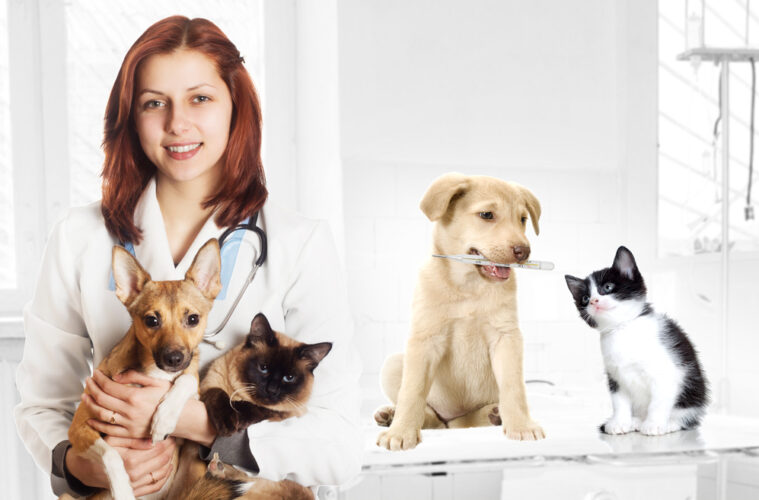If you’re a cat owner, one of the things you have to think about is how much a vet visit will cost. The average cost of a vet visit for a cat can vary depending on what services your cat needs, but it’s important to be prepared for veterinary bills just in case.
In this blog post, we’ll talk about the average cost of a vet visit for cats and how you can prepare for potential veterinary expenses.
How Can You Prepare for a Veterinarian Visit?
There are a few things you can do to prepare for a veterinarian visit, and one of the most important is to get cat insurance. Cat insurance can help cover the cost of vet bills, and it’s something you should consider if you’re a cat owner. You can also set aside money each month to help cover potential veterinary expenses, and this can be helpful in case of an unexpected vet bill.
What Is the Average Cost of a Vet Visit for a Cat?
The average cost of a vet visit for a cat varies depending on what services your cat needs, but there are some general estimates that you can use as a guide. For routine care, the average cost of a vet visit is $50-$100. If your cat needs more extensive care, the cost can range from $200-$500 or more.
How Much Does Cat Insurance Cost?
The cost of cat insurance varies depending on a variety of factors, including the age of your cat, the coverage you choose, and the deductible you select. Some cat insurance plans start as low as $20 per month, and this can be a great way to prepare for potential veterinary expenses.
No matter what your budget is, there are options available to help you prepare for the cost of a vet visit for your cat. Cat insurance can be a great way to offset the cost of veterinary care, and setting aside money each month can help you cover unexpected expenses. The most important thing is to be prepared so that you can take care of your cat if they need medical attention.
What Services Do Cats Need?
There are a variety of services that cats may need at the vet, and the cost of each service will vary. Some of the most common services that may be included in a veterinarian visit for your cat are:
A Physical Examination.
A cat physical examination is a routine check-up that is performed by a veterinarian to make sure your cat is healthy. The examination includes a review of the cat’s medical history, a physical examination of the cat, and laboratory tests.
Vaccinations.
Vaccinations are important for cats, and they can help protect them from diseases. The cost of vaccinations can vary depending on the type of vaccine and how many vaccines your cat needs. Some of the most common cat vaccinations include:
- Rabies Vaccination: The rabies vaccination is required by law in many states, and cats need to get this vaccine to protect themselves from rabies.
- Feline Distemper Vaccination: The feline distemper vaccination protects cats from several diseases, including feline panleukopenia, feline rhinotracheitis, and calicivirus.
- Feline Leukemia Vaccination: The feline leukemia vaccine helps protect cats from leukemia, a serious disease that can be fatal.
Spaying or Neutering.
Spaying or neutering is a surgical procedure that is performed to sterilize a cat. The cost of spaying or neutering can vary depending on the veterinarian and the cat’s age, weight, and health.
Dental Care.
Dental care is important for cats, and it can help to prevent tooth decay and gum disease. The cost of dental care can vary depending on the type of procedure that is needed and the cat’s age, weight, and health.
Various Tests.
Performed as part of a routine physical examination or when a cat is sick. The cost of these tests can vary depending on the type of test and the cat’s age, weight, and health.
- Blood tests.
- Fecal tests.
- Urine tests.
Radiographs.
Radiographs, also known as X-rays, are a common diagnostic tool used by veterinarians. They can be used to help diagnose a variety of conditions in cats, including:
- Broken bones.
- Foreign objects in the intestinal tract.
- Tumors.
Surgery.
The cost of surgery can vary depending on the type of procedure that is needed and the cat’s age, weight, and health.
As you can see, the cost of a vet visit for a cat can vary depending on the services your cat needs. It’s important to be prepared for potential vet bills, and cat insurance can be a helpful way to cover the cost of veterinary care.
How Can You Save Money on Cat Vet Bills?
There are a few things you can do to save money on cat vet bills. One way to save money is to get cat insurance. Cat insurance can help cover the cost of vet bills, and it’s something you should consider if you’re a cat owner.
You can also set aside money each month to help cover potential veterinary expenses, and this can be helpful in case of an unexpected vet bill. Others save money utilizing veterinary discount plans that are available.
Conclusion.
We hope this blog post has been helpful and informative. Don’t forget that cat insurance can be a valuable resource for cat owners looking to save money on vet bills. And it’s important to be prepared for potential veterinary expenses.
Do you have tips for saving money on cat vet bills? Share them in the comments below.

